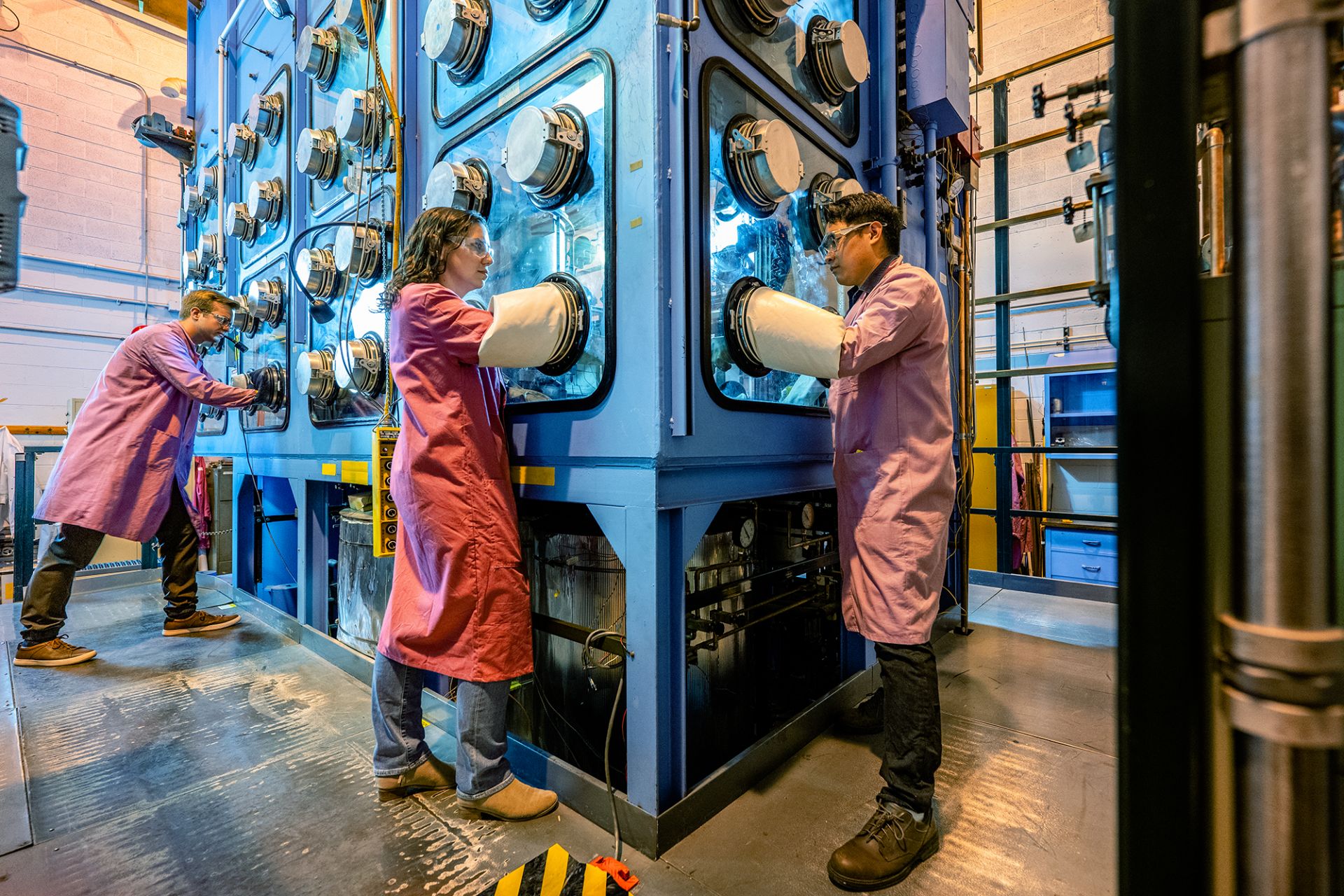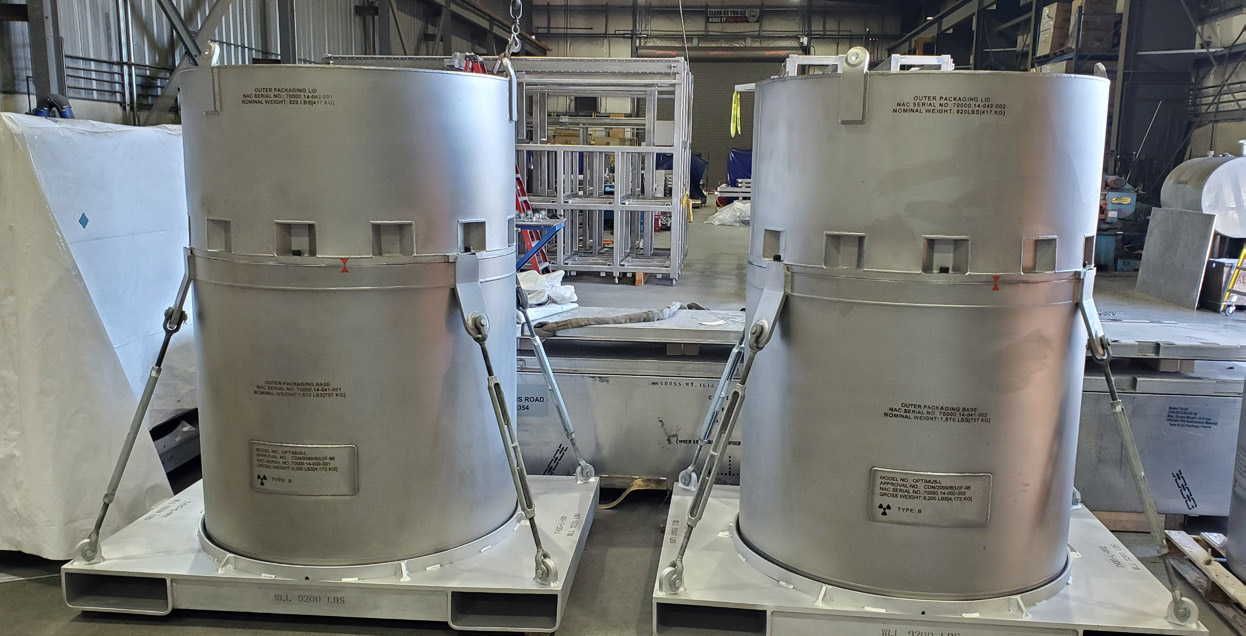Urenco’s Capenhurst enrichment site in the U.K. (Photo: Urenco)
A plan to build up a high-assay low-enriched uranium fuel cycle in the United Kingdom to support the deployment of advanced reactors is still in place after the Labour party was voted to power on July 4, bringing 14 years of conservative government to an end. A competitive solicitation for grant funding to build a commercial-scale HALEU deconversion facility opened days before the election, and the support of the new government was confirmed by a set of updates on July 19. But what does the U.K. HALEU program entail, and how does it differ from the U.S. HALEU Availability Program?
The former site of the K-33 gaseous diffusion enrichment plant in Oak Ridge’s East Tennessee Technology Park is the future site of Hermes and Hermes 2. (Photo: Kairos Power)
Nuclear Regulatory Commission staff has completed its final safety evaluation for Kairos Power’s application to build its Hermes 2 molten salt–cooled reactor test facility in Oak Ridge, Tenn., the agency announced July 22. Earlier, and independently, the NRC’s Advisory Committee on Reactor Safeguards (ACRS) reviewed safety-related aspects of the Kairos application and provided its review to the Commission on July 17. The evaluation concluded that there are no safety aspects that would preclude issuing a construction permit for the facility, but that can’t happen until the NRC staff issues its final environmental assessment later this summer and the Commission assesses the staff’s work (under newly streamlined procedures for mandatory hearings) this fall before voting on whether to authorize a construction permit.
Engineers in Argonne’s Chemical and Fuel Cycle Technologies Division. (Photo: Argonne National Laboratory)
Oklo Inc. announced that it has completed the first end-to-end demonstration of its advanced fuel recycling process as part of an ongoing $5 million project in collaboration with Argonne and Idaho National Laboratories. Oklo’s goal: scaling up its fuel recycling capabilities to deploy a commercial-scale recycling facility that would increase advanced reactor fuel supplies and enhance fuel cost effectiveness for its planned sodium fast reactors.
The color-coded scatterplot shows the feasibility of coal-to-nuclear transitions at smaller coal plants (1,000 MWe or less) across the United States, plotted by latitude and longitude. Red and warm colors represent the high feasibility. (Image: Muhammad Rafiul Abdussami, Fastest Path to Zero, University of Michigan)
Comprehensive analysis of 245 operational coal power plants in the United States by a team of researchers at the University of Michigan has scored each site’s advanced reactor hosting feasibility using a broad array of attributes, including socioeconomic factors, safety considerations, proximity to populations, existing nuclear facilities, and transportation networks. The results could help policymakers and utilities make decisions about deploying nuclear reactors at sites with existing transmission lines and a ready workforce.
A view of INL’s desert site. (Photo: INL)
Aalo reported last week that it has submitted a regulatory engagement plan to the Nuclear Regulatory Commission in “a huge step forward in getting regulatory approval for our Aalo-1 reactor.”
Nuclear power plants in operation or under construction as of May 2024. (Source: IAEA)
The recent article “How Innovative Is China in Nuclear Power?” published by the Information Technology and Innovation Foundation (ITIF) describes how China has become the world’s leading proponent of nuclear energy. The reason, the article maintains, is because its nuclear industry has been “supported by a whole-of-government strategy that provides extensive financing and systemic coordination.”
Concept art of ACU’s NEXT Lab. (Image: ACU)
Natura Resources, which is supporting the construction of a molten salt research reactor on the campus of Texas’s Abilene Christian University, announced in mid-June that it expects the Nuclear Regulatory Commission to complete its safety assessment and issue a permit for the nonpower test reactor in September.
A screenshot from a DOE video showing the eight Ukrainian students from the department’s internship program at Argonne National Laboratory, along with one of their tour guides (second from left). (Image: DOE)
Eight graduate students from Ukrainian universities have completed a two-year Department of Energy internship program that included a visit to Argonne National Laboratory.
An aerial photo of the three mile island nuclear power station. (Photo: Constellation)
On the company’s earnings call this month, Constellation CEO Joe Dominguez was asked if there is a possibility of restarting the shuttered Three Mile Island plant—as is being proposed for the Palisades nuclear plant in Michigan.
“We’re not unaware that opportunity exists for us,” Dominguez said. “We’re obviously seen what’s happened with Palisades and I think that was brilliant. Brilliant for the nation. … We are doing a good bit of thinking about a number of different opportunities, and that would probably certainly be one of those that we would think about.”
HALEU reguli fabricated from downblended high-enriched uranium recovered from legacy EBR-II fuel at Idaho National Laboratory. (Image: DOE)
The Department of Energy yesterday announced a draft environmental impact statement (EIS) on HALEU Availability Program plans to purchase high-assay low-enriched uranium under 10-year contracts to seed the development of a sustainable commercial HALEU supply chain.
From left: Piercy, Hart, Iyengar, Tobey
The latest virtual event produced by the American Nuclear Society brought together experts from the forefront of the global nuclear industry to discuss strategies for ensuring a safe, secure, and healthy expansion in the face of a rapidly changing energy and geopolitical landscape.
The webinar, moderated by ANS Executive Director/CEO Craig Piercy, featured J’Tia Hart, chief science officer for the National and Homeland Security Directorate at Idaho National Laboratory; Anagha Iyengar, deputy program director for analytics and innovation at the National Nuclear Security Administration’s Office of International Nuclear Security; and William Tobey, former NNSA deputy administrator for defense nuclear nonproliferation.

















